Full text
PDF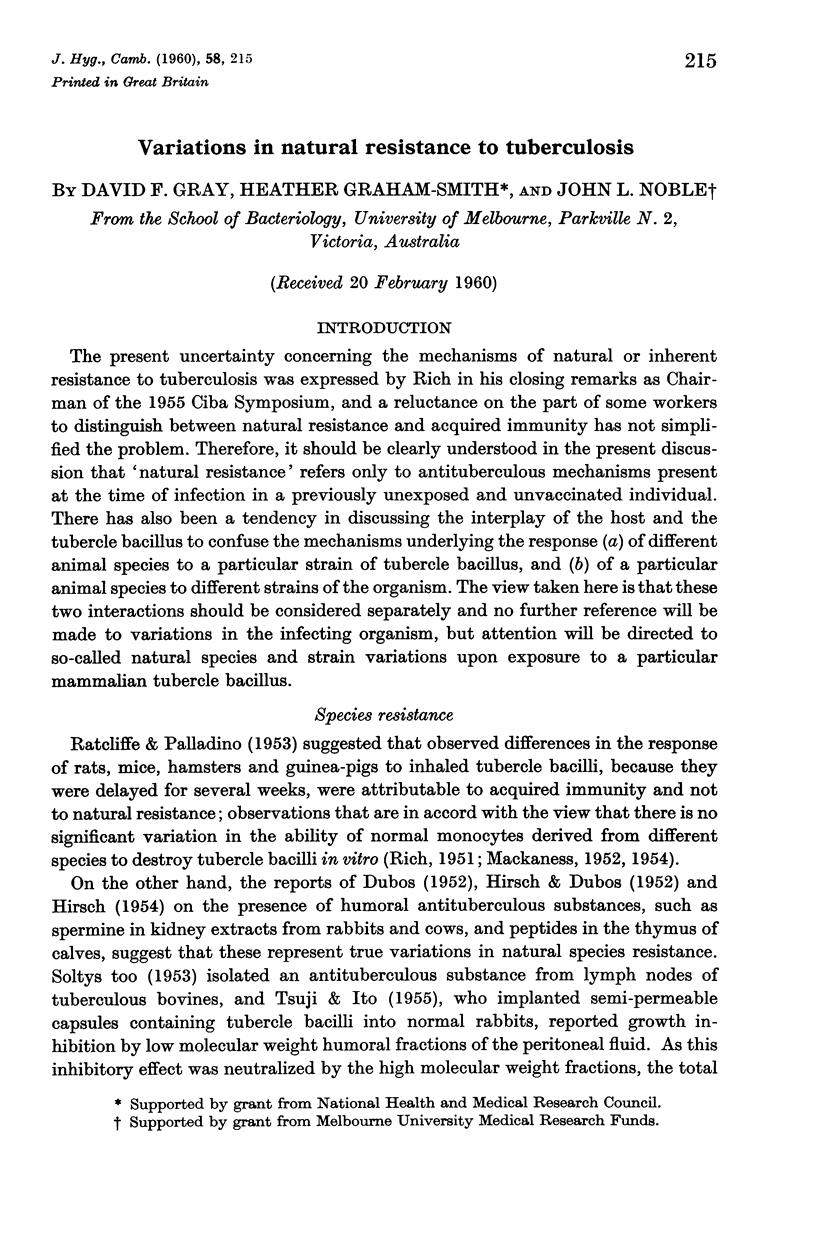

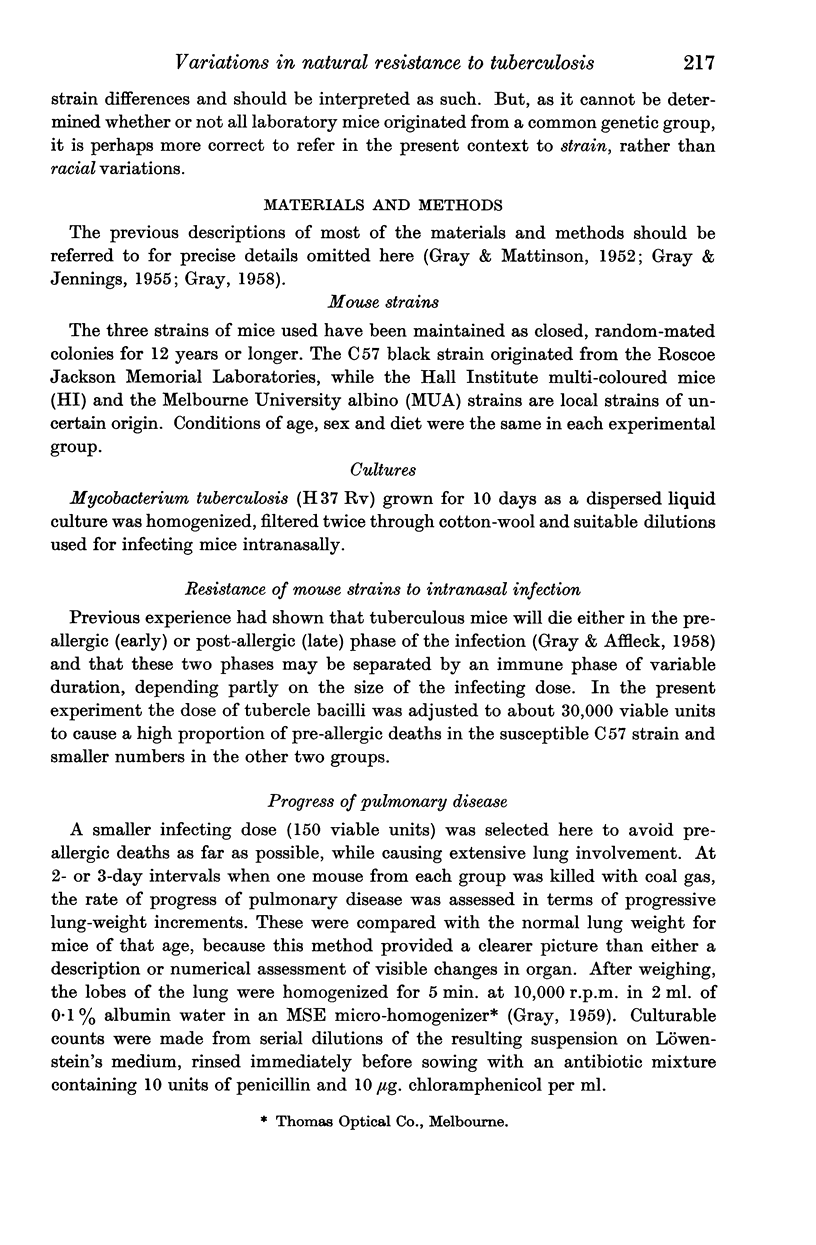
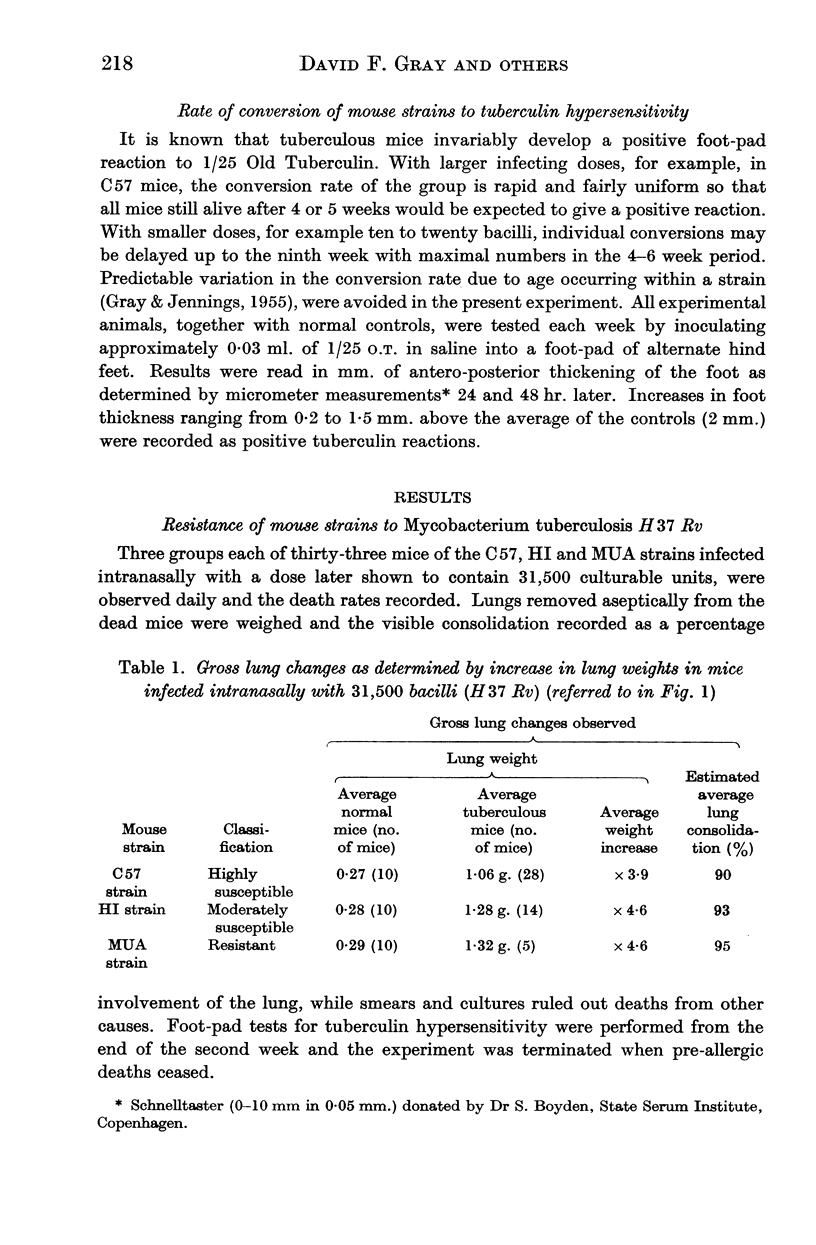
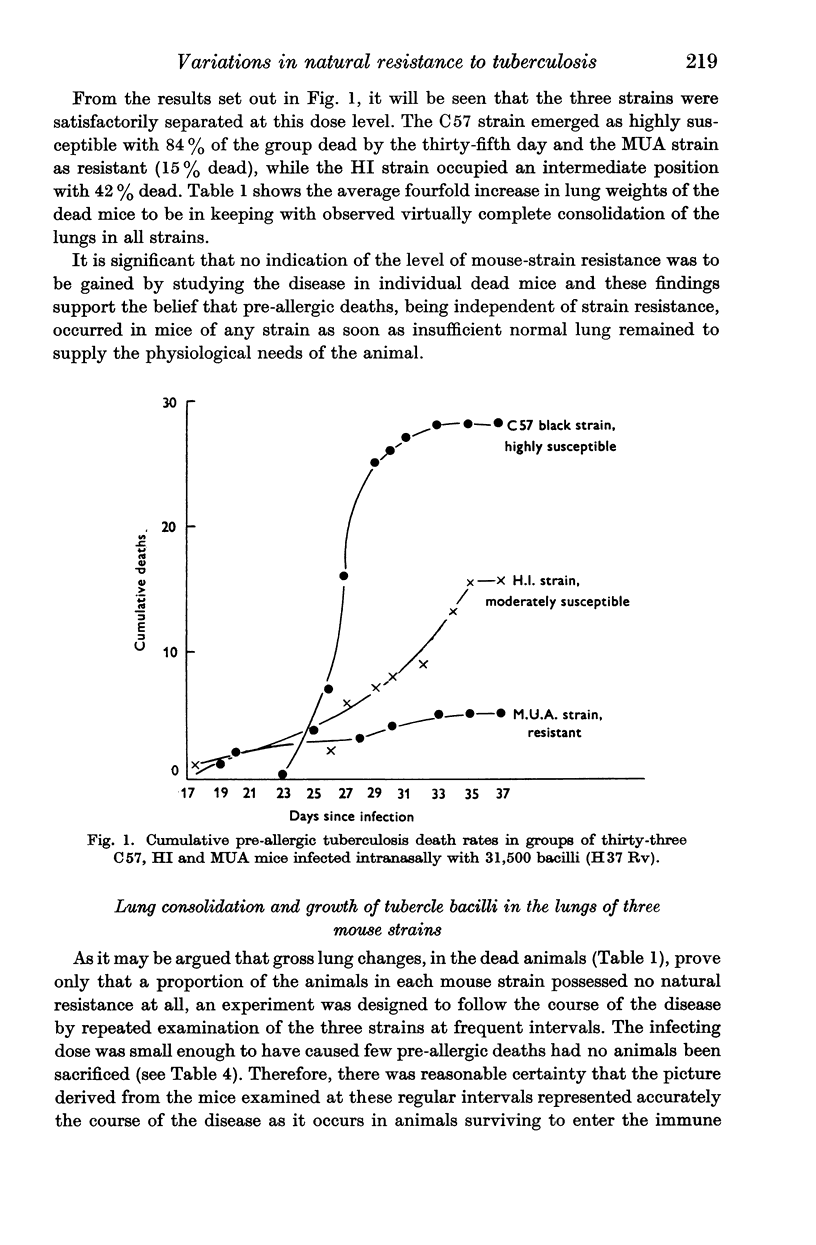
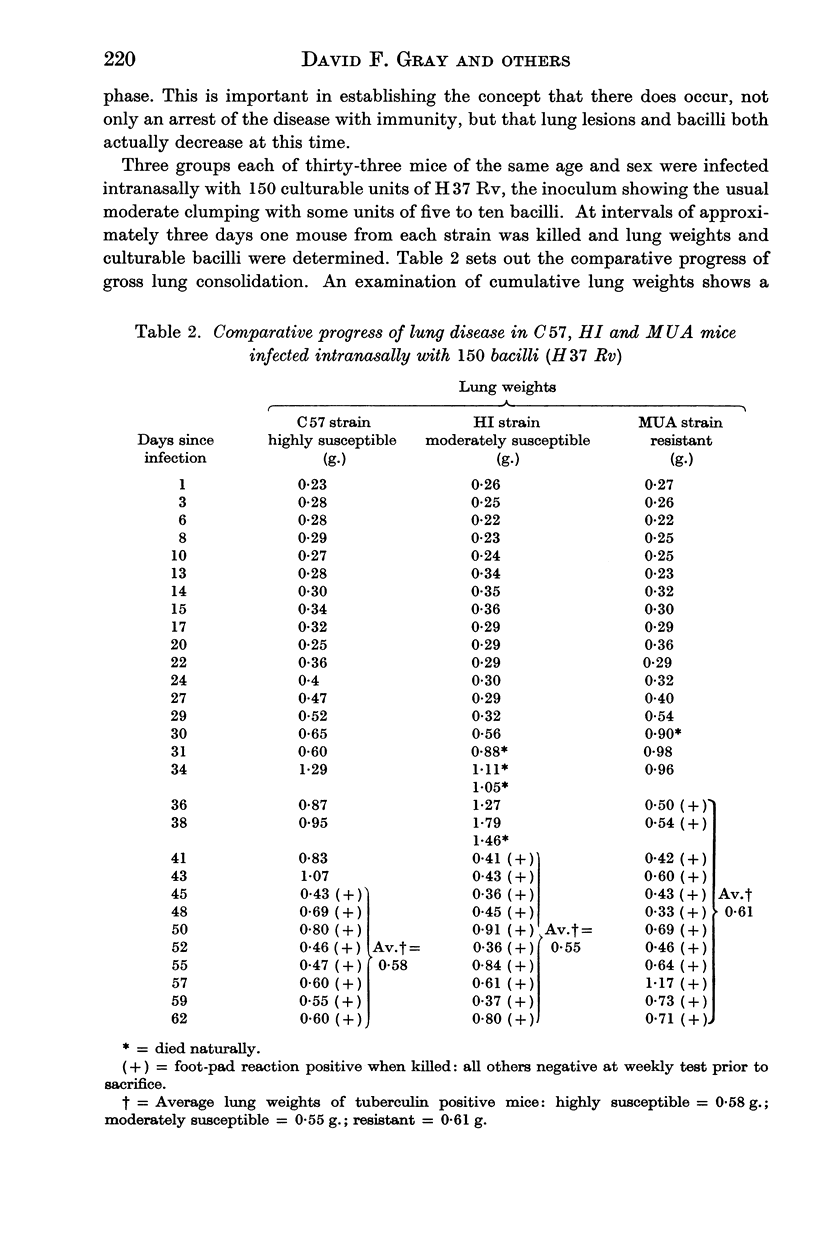
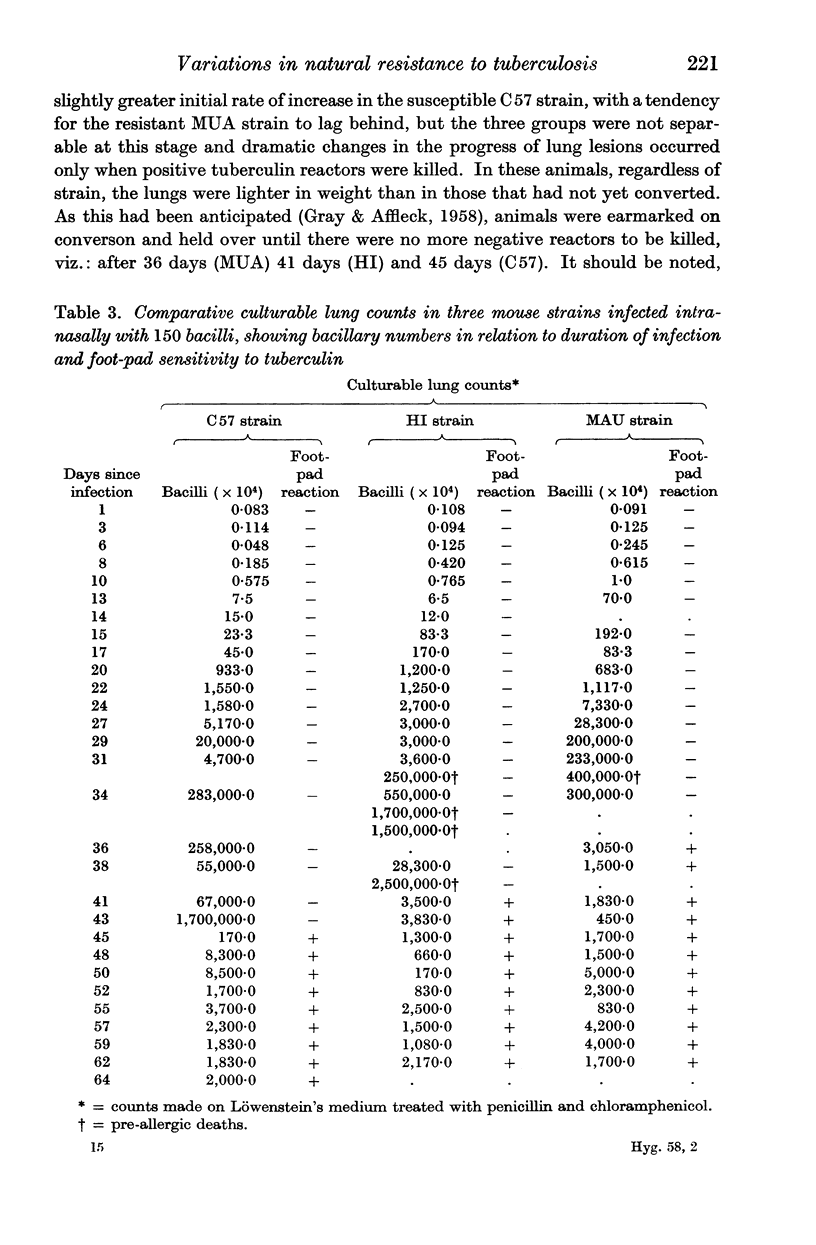
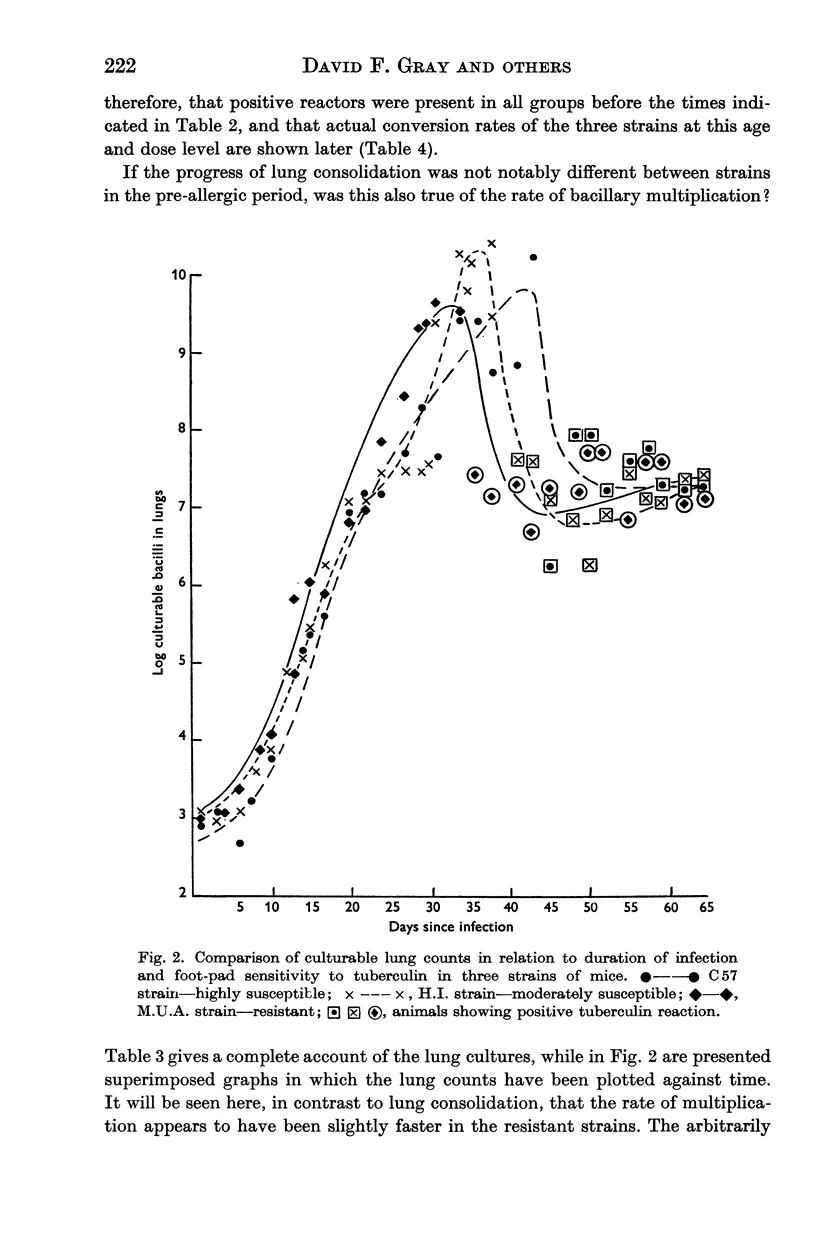
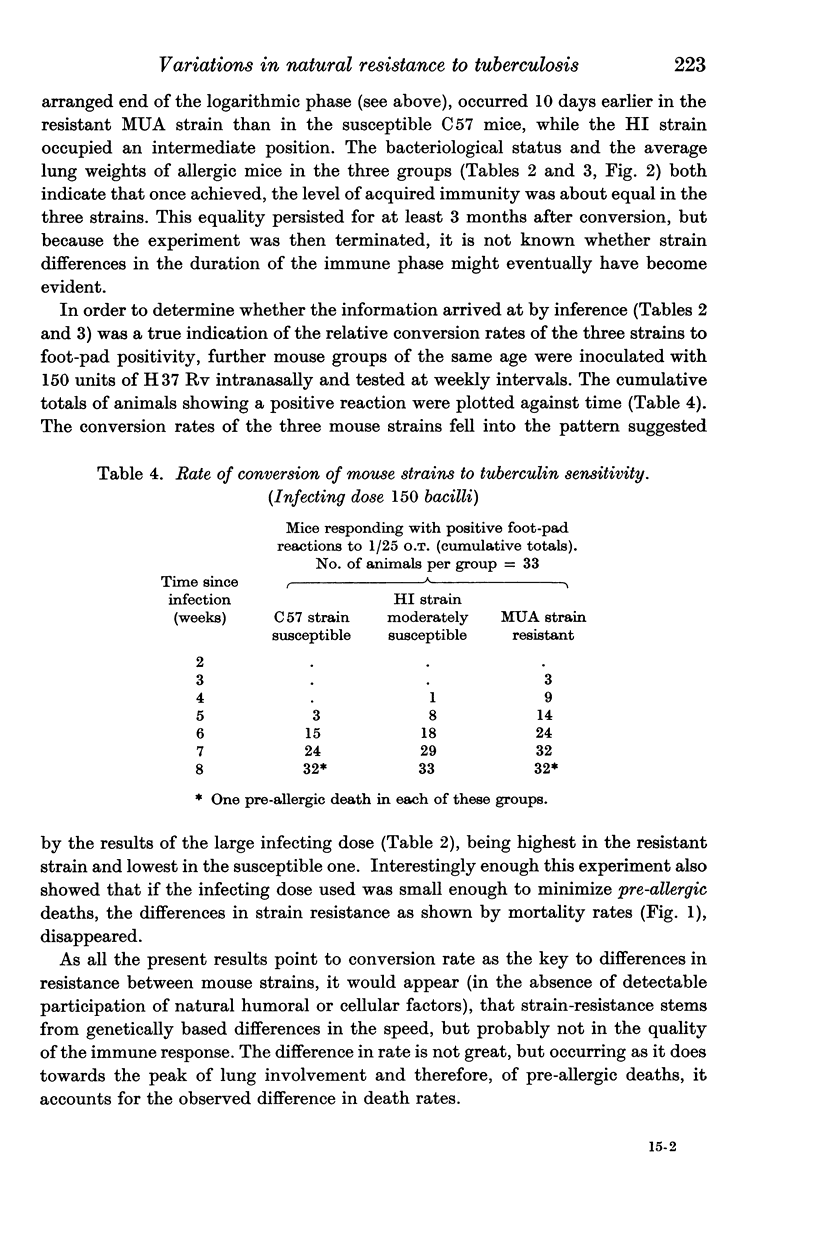
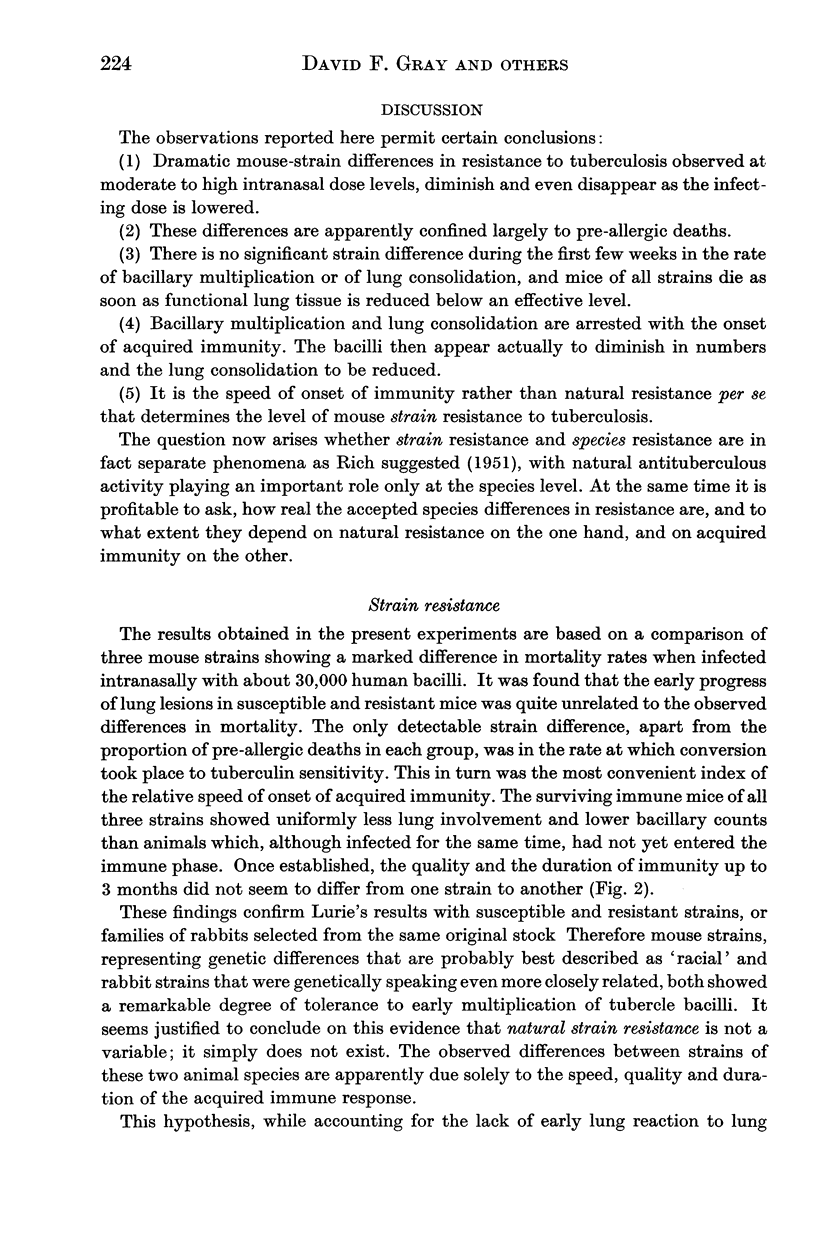

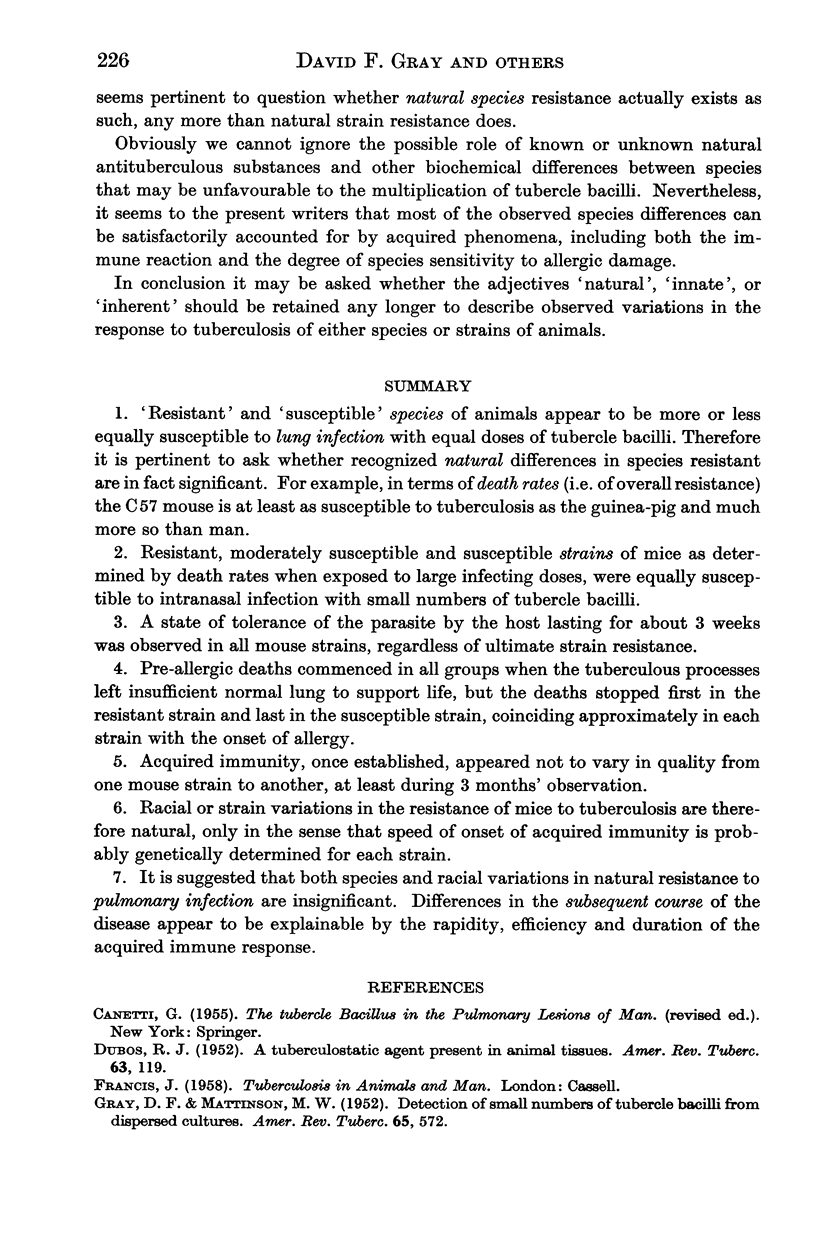
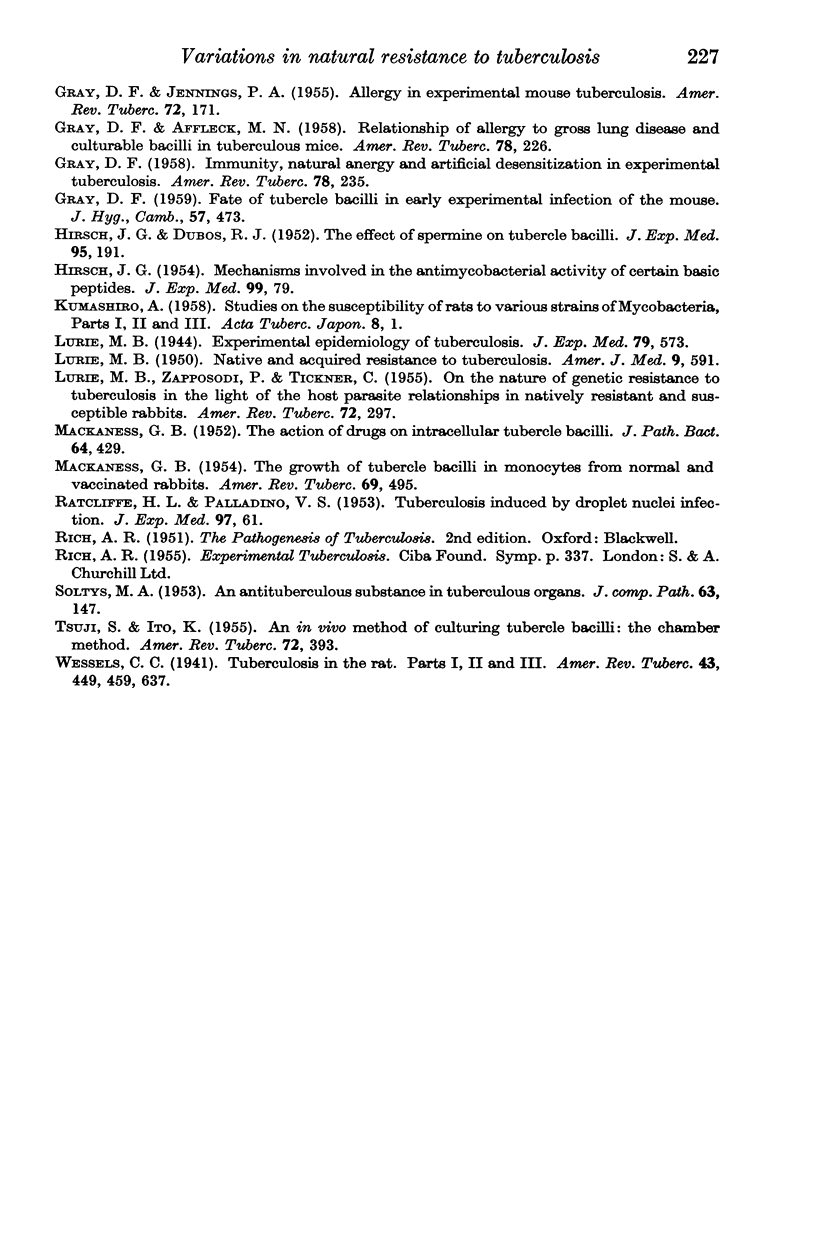
Selected References
These references are in PubMed. This may not be the complete list of references from this article.
- DUBOS R. J. A tuberculostatic agent present in animal tissues. Am Rev Tuberc. 1951 Jan;63(1):119–119. doi: 10.1164/art.1951.63.1.119. [DOI] [PubMed] [Google Scholar]
- GRAY D. F., AFFLECK M. N. Relationship of allergy to gross lung disease and culturable bacilli in tuberculous mice. Am Rev Tuberc. 1958 Aug;78(2):226–234. doi: 10.1164/artpd.1958.78.2.226. [DOI] [PubMed] [Google Scholar]
- GRAY D. F. Fate of tubercle bacilli in early experimental infection of the mouse. J Hyg (Lond) 1959 Dec;57:473–483. doi: 10.1017/s0022172400020313. [DOI] [PMC free article] [PubMed] [Google Scholar]
- GRAY D. F. Immunity, natural anergy, and artificial desensitization in experimental tuberculosis. Am Rev Tuberc. 1958 Aug;78(2):235–250. doi: 10.1164/artpd.1958.78.2.235. [DOI] [PubMed] [Google Scholar]
- GRAY D. F., JENNINGS P. A. Allergy in experimental mouse tuberculosis. Am Rev Tuberc. 1955 Aug;72(2):171–195. doi: 10.1164/artpd.1955.72.2.171. [DOI] [PubMed] [Google Scholar]
- GRAY D. F., MATTINSON M. W. Detection of small numbers of tubercle bacilli from dispersed cultures, using mice, guinea pigs, and artificial media. Am Rev Tuberc. 1952 May;65(5):572–588. [PubMed] [Google Scholar]
- HIRSCH J. G., DUBOS R. J. The effect of spermine on tubercle bacilli. J Exp Med. 1952 Feb;95(2):191–208. doi: 10.1084/jem.95.2.191. [DOI] [PMC free article] [PubMed] [Google Scholar]
- HIRSCH J. G. Mechanisms involved in the antimycobacterial activity of certain basic peptides. J Exp Med. 1954 Jan 1;99(1):79–88. doi: 10.1084/jem.99.1.79. [DOI] [PMC free article] [PubMed] [Google Scholar]
- LURIE M. B. Native and acquired resistance to tuberculosis. Am J Med. 1950 Nov;9(5):591–610. doi: 10.1016/0002-9343(50)90210-5. [DOI] [PubMed] [Google Scholar]
- LURIE M. B., ZAPPASODI P., TICKNER C. On the nature of genetic resistance to tuberculosis in the light of the host-parasite relationships in natively resistant and susceptible rabbits. Am Rev Tuberc. 1955 Sep;72(3):297–329. doi: 10.1164/artpd.1955.72.3.297. [DOI] [PubMed] [Google Scholar]
- MACKANESS G. B. The action of drugs on intracellular tubercle bacilli. J Pathol Bacteriol. 1952 Jul;64(3):429–446. doi: 10.1002/path.1700640302. [DOI] [PubMed] [Google Scholar]
- MACKANESS G. B. The growth of tubercle bacilli in monocytes from normal and vaccinated rabbits. Am Rev Tuberc. 1954 Apr;69(4):495–504. doi: 10.1164/art.1954.69.4.495. [DOI] [PubMed] [Google Scholar]
- RATCLIFFE H. L., PALLADINO V. S. Tuberculosis induced by droplet nuclei infection; initial homogeneous response of small mammals (rats, mice, guinea pigs, and hamsters) to human and to bovine bacilli, and the rate and pattern of tubercle development. J Exp Med. 1953 Jan;97(1):61–68. doi: 10.1084/jem.97.1.61. [DOI] [PMC free article] [PubMed] [Google Scholar]
- SOLTYS M. A. An anti-tuberculous substance in tuberculous organs. J Comp Pathol. 1953 Apr;63(2):147–152. doi: 10.1016/s0368-1742(53)80017-2. [DOI] [PubMed] [Google Scholar]
- TSUJI S., ITO K. An in vivo method of culturing tubercle bacilli: the chamber method. Am Rev Tuberc. 1955 Sep;72(3):393–397. doi: 10.1164/artpd.1955.72.3.393. [DOI] [PubMed] [Google Scholar]


